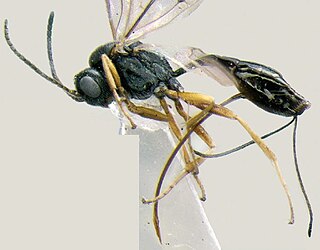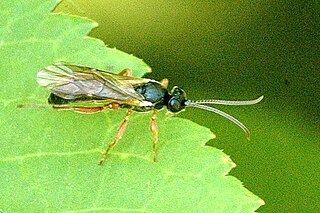
A raven is one of several larger-bodied species of the genus Corvus. These species do not form a single taxonomic group within the genus.

In taxonomy, binomial nomenclature, also called binominal nomenclature or binary nomenclature, is a formal system of naming species of living things by giving each a name composed of two parts, both of which use Latin grammatical forms, although they can be based on words from other languages. Such a name is called a binomial name, a binomen, binominal name or a scientific name; more informally it is also called a Latin name.

Nightjars are medium-sized nocturnal or crepuscular birds in the subfamily Caprimulginae and in the family Caprimulgidae, characterised by long wings, short legs and very short bills. Some New World species are called nighthawks. The English word "nightjar" originally referred to the European nightjar.

The Lacertidae are the family of the wall lizards, true lizards, or sometimes simply lacertas, which are native to Europe, Africa, and Asia. The group includes the genus Lacerta, which contains some of the most commonly seen lizard species in Europe. It is a diverse family with at least 300 species in 39 genera.

Verrucomicrobia is a phylum of bacteria that contains only a few described species. The species identified have been isolated from fresh water, marine and soil environments and human faeces. A number of as-yet uncultivated species have been identified in association with eukaryotic hosts including extrusive explosive ectosymbionts of protists and endosymbionts of nematodes residing in their gametes.
Paleontology or palaeontology is the study of prehistoric life forms on Earth through the examination of plant and animal fossils. This includes the study of body fossils, tracks (ichnites), burrows, cast-off parts, fossilised feces (coprolites), palynomorphs and chemical residues. Because humans have encountered fossils for millennia, paleontology has a long history both before and after becoming formalized as a science. This article records significant discoveries and events related to paleontology that occurred or were published in the year 1964.

Tersilochinae is a worldwide subfamily of the parasitic wasp family Ichneumonidae.

Tersilochus is a genus of the parasitic wasp family Ichneumonidae. The type species is Tersilochus jocator.
Allophroides is a genus of the parasitic wasp family Ichneumonidae. The type species is Allophroides boops.

Allophrys is a genus of the parasitic wasp family Ichneumonidae.
Australochus is a genus of the parasitic wasp family Ichneumonidae. It currently consists of only one species, Australochus clypeator.
Aneuclis is a genus of the parasitic wasp family Ichneumonidae.

The Solanaceae, or nightshades, are a family of flowering plants that ranges from annual and perennial herbs to vines, lianas, epiphytes, shrubs, and trees, and includes a number of agricultural crops, medicinal plants, spices, weeds, and ornamentals. Many members of the family contain potent alkaloids, and some are highly toxic, but many—including tomatoes, potatoes, eggplant, bell and chili peppers—are used as food. The family belongs to the order Solanales, in the asterid group and class Magnoliopsida (dicotyledons). The Solanaceae consists of about 98 genera and some 2,700 species, with a great diversity of habitats, morphology and ecology.

Idiogramma elbakyanae is a species of parasitoid wasp found in the Mexican state of Tlaxcala. The species was named and described by the Russian entomologist Andrey I. Khalaim. The description was published in a 2017 open access article co-authored with Mexican entomologist Enrique Ruíz-Cancino.
Idiogramma is a genus of wasp. It is the only extant genus in the tribe Idiogrammatini.

Idiogramma comstockii is a species of wasp.

Exochus is a genus of ichneumon wasps in the family Ichneumonidae. There are at least 270 described species in Exochus.

Triclistus pallipes is a species of ichneumon wasp in the family Ichneumonidae.
Diaparsis is a genus of parasitoid wasps belonging to the family Ichneumonidae.
Ctenophion is a genus of the parasitic wasp family Ichneumonidae. It currently consists of only one species, Ctenophion niger, from the Nearctic.











